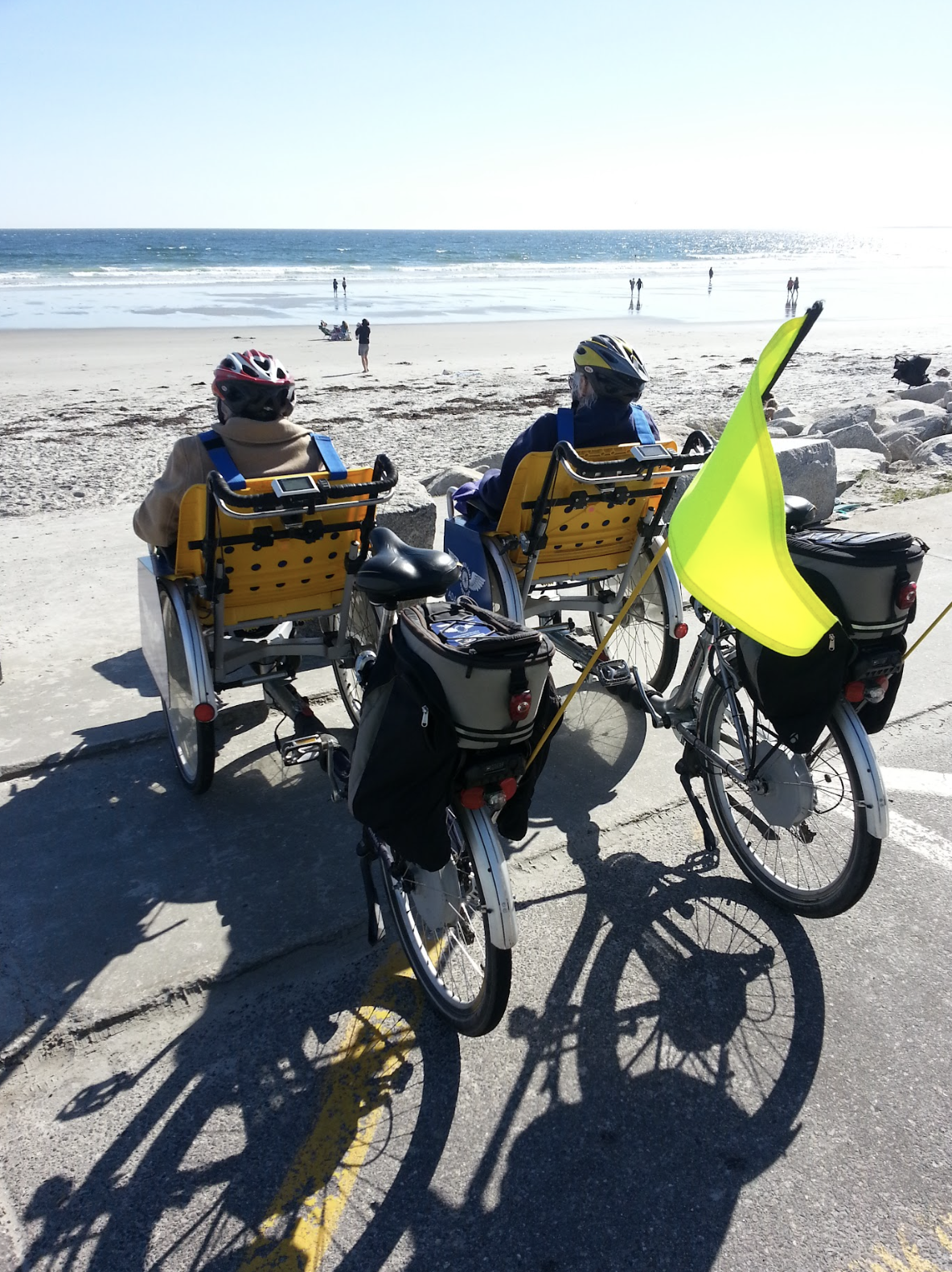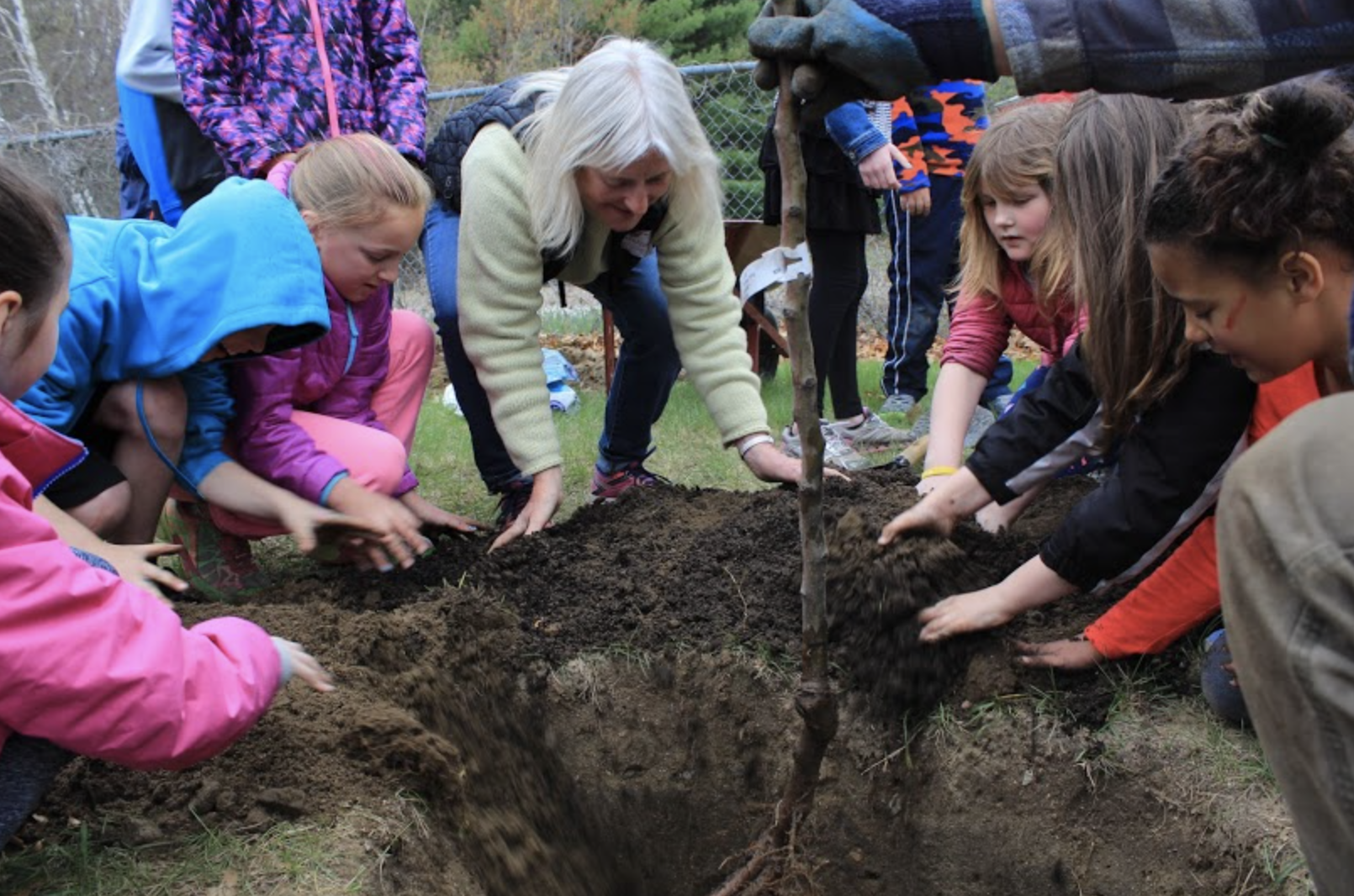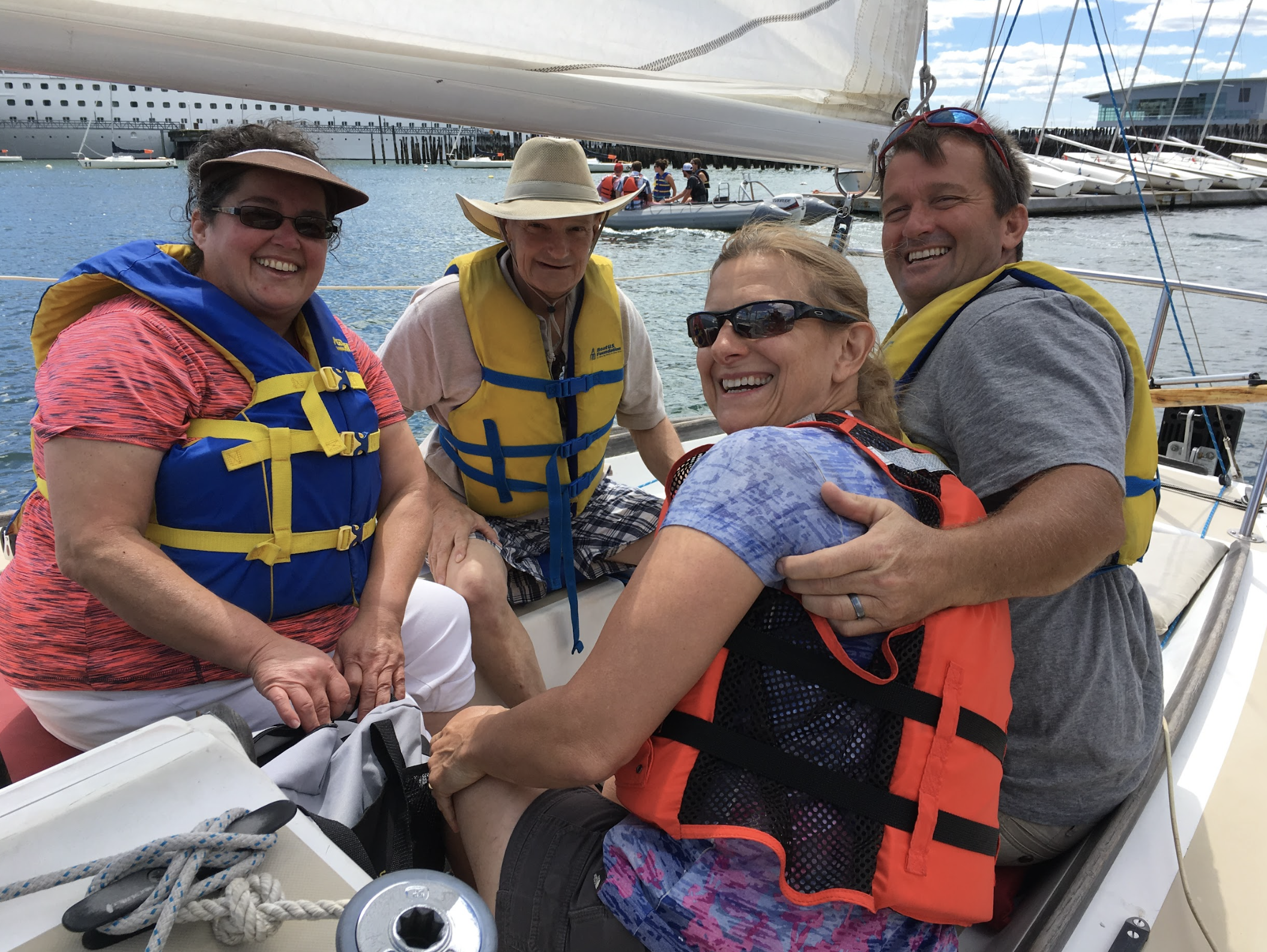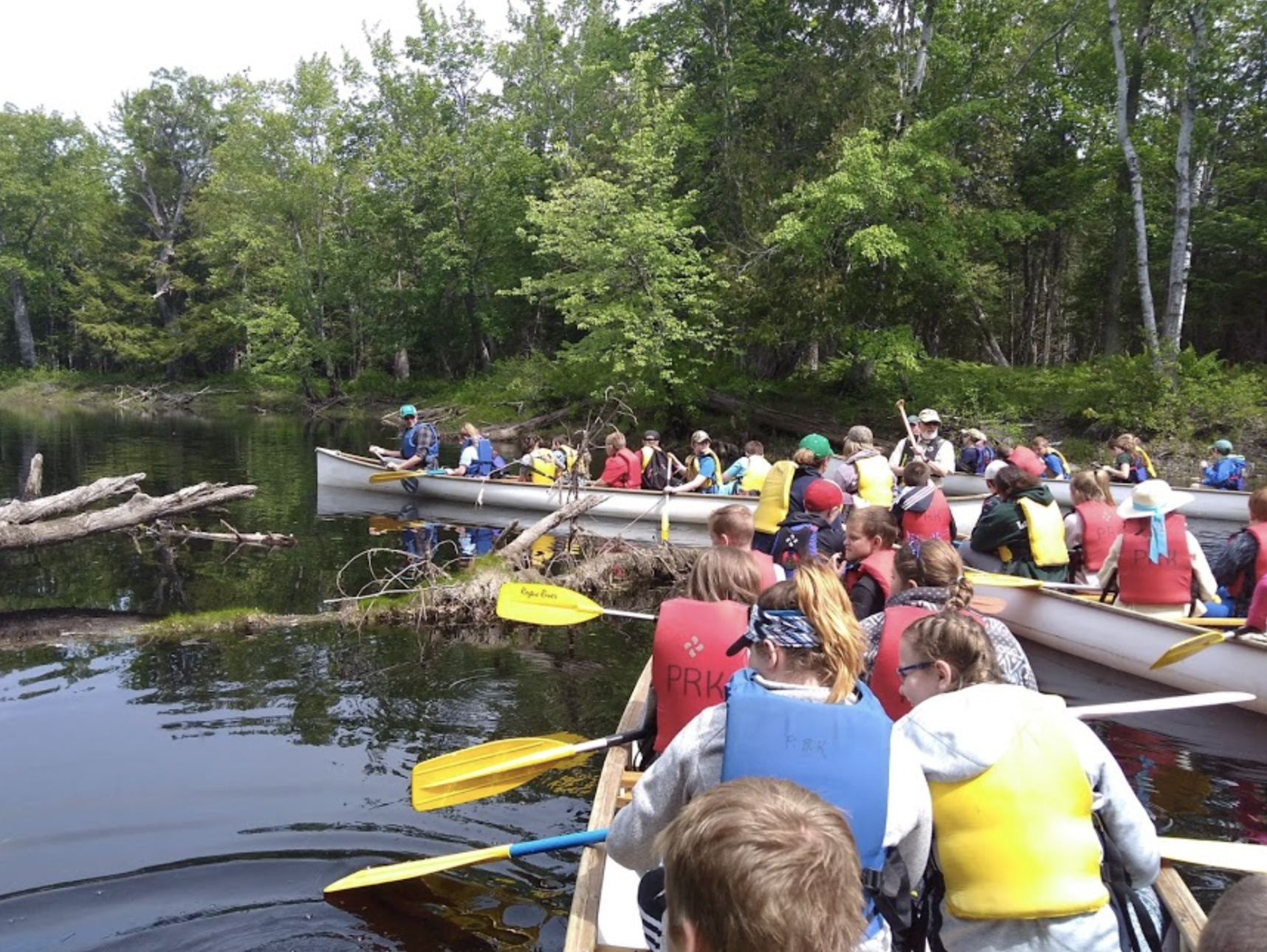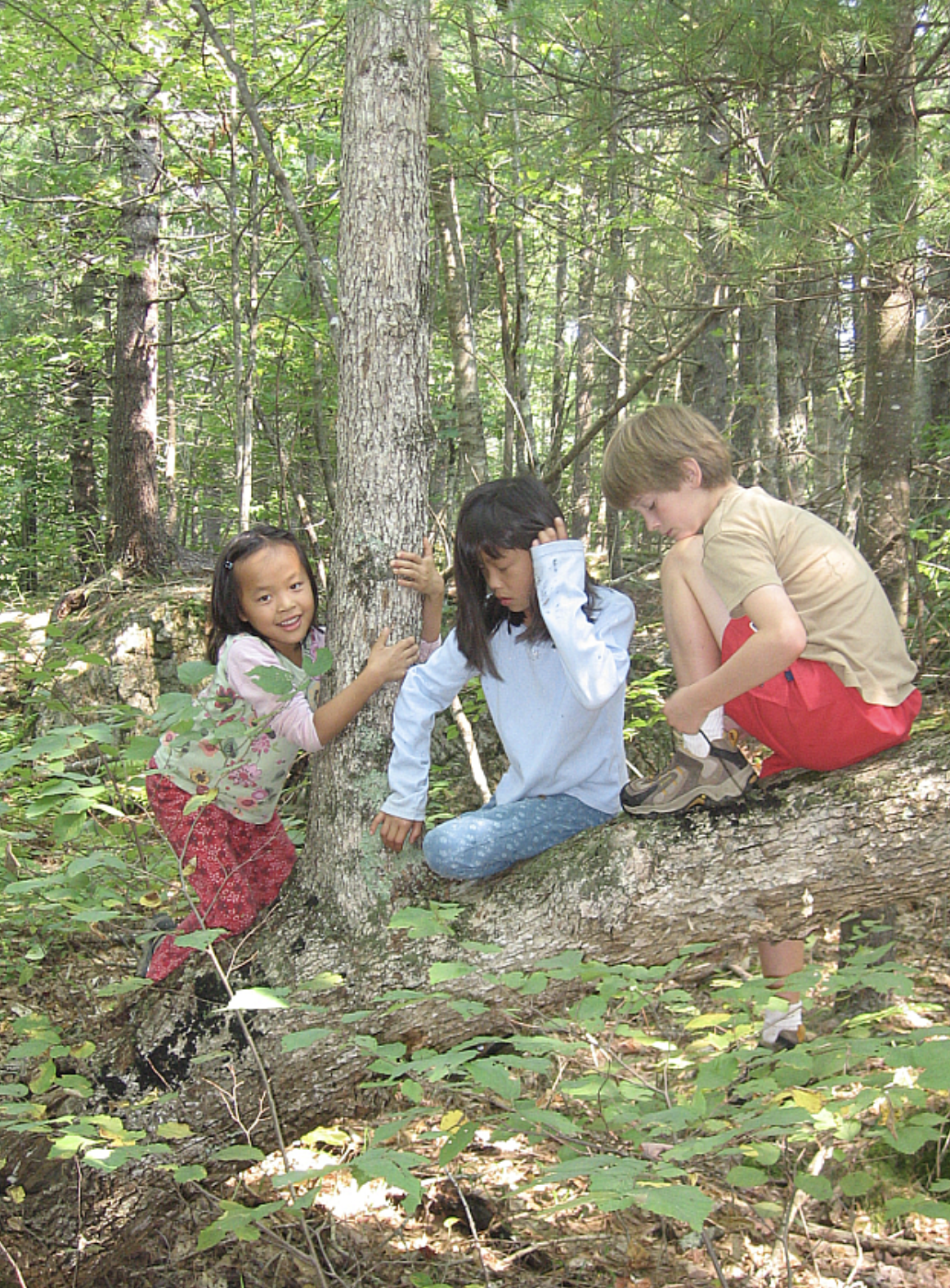
Our Focus
To us, Human Wholeness is physical, emotional, social and spiritual well-being. We believe in the inherent value of the natural world to advance Human Wholeness, and that deepening bonds with nature is vital.
Movement
Creating and supporting opportunities for people to consistently choose, and meaningfully experience, nearby nature and wilderness through movement and activity.
-
Deepening the bonds between people, nature, and one another through immersive wilderness journeys
Growing outdoor recreation events to discover nearby nature and commune with neighbors
Reducing barriers (social, physical, logistical) for people to access nearby nature and open space
Creating, promoting, or restoring parks, gardens, and green spaces
Addressing community disparities to encourage safe, equitable outdoor access
Promoting active transportation choices to benefit self and environment
Marketing successful programs and under-utilized nearby nature spaces
Building or improving trails for walking, hiking, biking, and winter travel
Partnering with healthcare professionals to champion movement as a tool - and nature as an asset - to support public health
Awakening instinctive bonds and exploring relationships that link humans with nature
Nourishment
Creating and supporting opportunities for people to consistently choose regional and plant-based foods that restore human and environmental health.
-
Promoting participation in community gardens and farms
Growing knowledge and skills for selecting and preparing healthy, natural, local foods
Addressing community disparities to access affordable regional foods as well as land necessary to participate in growing food
Educating Mainers on the human and environmental health benefits of a regional, plant-based diet
Expanding gleaning, food waste reduction and composting programs
Advocating for healthier, more sustainable menus within institutions
Building awareness and skills for regenerative, sustainable farming techniques
Awakening pride and joy from growing food in a family or community setting
Exploring ecological truths that link humans with nature through daily food choices
What Do We Mean by Human Wholeness and Why is it Our Focus?
To us, Human Wholeness is the state of physical, emotional, social and spiritual well-being. We believe connecting with nature and each other is vital to growing Human Wholeness, yet is simply not prioritized by modern society.
There are many factors in our modernized society that contribute to high rates of illness and disease. Our current lifestyles have us inside more, in less relationship with other humans, further removed from where our food comes from, and disconnected from the natural environment. Our belief is greater Human Wholeness is attained when we are able to re-center what we eat and how we move our bodies. Our primary focus areas of Movement and Nourishment support work that integrates the fundamental human need for connection, to one another, ourselves, and the planet.
The Center for Disease Control and Prevention estimates that 75 percent of our health care dollars are used to treat preventable chronic diseases and conditions. We see symptoms of our modern lives like Nature Deficit Disorder, Isolation and Loneliness, Sedentary Lifestyles and A Broken Food System as key challenges to our individual and collective well-being.
Our grantmaking strives to advance Human Wholeness by supporting work that is focused on not only addressing these symptoms, but thoughtfully shifting the conditions that allow them to persist. Our wish is that people are more supported to make proactive choices to benefit personal and planetary health. We hope for a collective commitment to Human Wholeness that supports behavior change on an individual and collective level. To help blaze a new path, we shift away from our detrimental subsidized food system, recognize the limitations of our current healthcare model, and we invest in human connection, active lifestyles and nourished bodies.
Nature Deficit Disorder
REVERSING
-
Human beings are experiencing an unprecedented disconnection from nature and one another. Although human beings have been urbanizing, and moving indoors since the introduction of agriculture, fast-moving social and technological changes in the past three decades have accelerated that change. Among the reasons: the proliferation of electronic communications; poor urban planning and disappearing open space; increased street traffic; diminished importance of the natural world in public and private education; and parental fear magnified by news and entertainment media.
Our disconnection from nature has major implications for our well-being... An expanding body of scientific evidence suggests that nature-deficit disorder contributes to a diminished use of the senses, attention difficulties, conditions of obesity, and higher rates of emotional and physical illnesses. These problems are linked more broadly to what health care experts call the "epidemic of inactivity," and to a devaluing of independent, unstructured play.
Our disconnection from nature also has major implications for the environment. Research suggests that nature-deficit disorder weakens ecological literacy and stewardship of the natural world.
By enhancing the connection between people and the natural environment, we can reverse these alarming trends and increase a mutual flourishing that we call human wholeness.
“The best remedy for those who are afraid, lonely, or unhappy is to go outside, somewhere where they can be quite alone with the heavens, nature and God. Because only then does one feel that all is as it should be and that God wishes to see people happy amidst the simple beauty of nature. ...I firmly believe that nature brings solace in all troubles.”
-Anne Frank
Isolation and Loneliness
REVERSING
-
Social connection is widely considered a fundamental human need — crucial to both well-being and survival. Meanwhile, the most recent U.S. census data shows more than a quarter of the population lives alone, more than half of the population is unmarried and, since the previous census, marriage rates and the number of children per household have declined.[1]
Here in Maine, nearly half of Mainers 65 and older — about 46 percent — live alone, which is slightly higher than the national rate. Among the reasons: Experts say shifts in family dynamics have compounded other factors that are part of rural life that contribute to isolation, including poor public transportation and the significant distance to grocery stores, doctors, community centers or even neighbors’ homes. Baby boomers, who had fewer children than previous generations, are living longer, often with chronic diseases that can reduce their mobility. Family networks that traditionally cared for older generations are more dispersed or have unraveled altogether. These trends suggest that Americans are becoming less socially connected and experiencing more loneliness.
The trend is already acute in rural regions like Maine. Many communities have witnessed the collapse of the paper industry, other manufacturing jobs, and young people continue to leave for jobs out of state. Many nations around the world now suggest we are facing a 'loneliness epidemic.' [2]
Our disconnection from one another has major implications for our wellness. There is robust evidence that social isolation and loneliness significantly increase risk for premature mortality, and the magnitude of the risk exceeds that of many leading health indicators.[3] Social isolation and loneliness are associated with a 29 percent increased risk for coronary heart disease and a 32 percent increased risk for stroke.
“Strange is our situation here on Earth. Each of us comes for a short visit, not knowing why, yet sometimes seeming to divine a purpose. From the standpoint of daily life, however, there is one thing we do know: that we are here for the sake of each other.”
-Albert Einstein
REVERSING
-
In the United States, poor diets are the greatest cause of non-communicable disease. Changes to our food system, particularly in the last three decades, have greatly impacted human health. The components of a food system include the production, processing, marketing, and purchase of food and related consumer behaviors, resources and institutions. [4] There are several contributing factors to an unhealthy food system. Some of the more obvious changes include the abundance of processed foods available in more places than ever before, larger portions, a greater frequency of meals eaten outside the home, increased consumption of animal-source based foods and the frantic pace of modern life which has caused a proliferation of fast-food restaurants. **
The less obvious, but highly insidious, factors influencing our food system are food marketing and subsidies. Not only do large food companies spend millions of dollars to advertise highly processed and sugary foods (particularly to kids), they also sponsor research studies that demonstrate their products don’t have a negative impact on health. Not surprisingly, independent and peer-reviewed studies do not show the same results.
For over three decades U.S. food policy has promoted the overproduction of inexpensive commodity crops including corn and soybeans. Policies that subsidize a narrow number of commodities increase the calories in our food system at the expense of a greater range of foods, and therefore micronutrients, in our diet. The United States now spends nearly $30 billion a year to subsidize corn and soy production and unhealthy food is cheaper because our government’s food policies support its production. Since the 1970s — when our agricultural policies changed to support corn and soy farmers — we’re consuming, on average, an extra 500 calories per person. These calories are mostly coming from cheap high-fructose corn syrup. [5] The most profitable food production sectors are snack food producers, not the producers of healthier alternatives. Very few, if any, subsidies are for the production of produce or healthier foods. And the same government agency that supports the production of ingredients for unhealthy food provides less than $300 million (or 1% of subsidy funding) for nutrition education.[6]
So, what impact has the over consumption of low quality food, food marketing, and subsidies had on our health? The Center for Disease Control and Prevention estimates that 75 percent of our health care dollars are spent treating preventable chronic diseases and poor dietary habits are one of the greatest contributing factors of chronic disease.[7] Diet-related disease includes cardiovascular disease, type 2 diabetes, cancer, and osteoporosis. Seventy-two percent of Americans are overweight, over one third are medically obese, and one in three children born today will be diabetic in their lifetime.
In addition to human health, our current food system has a detrimental impact on the environment and other living beings. Industrial food production affects fresh water, soil, and the high carbon output is contributing to climate change while animals raised in factory farms frequently experience inhumane treatment.
*Fresh Food By Prescription: This Health Care Firm Is Trimming Costs — And Waistlines
** Wallinga, David. "Industrialized Agriculture Has Produced an Unhealthy Food System." Is the Western Diet Making the World Sick?, edited by Susan C. Hunnicutt, Greenhaven Press, 2013.
A Broken Food System
“Let food be thy medicine and medicine be thy food.”
-Hippocrates
The Sedentary Lifestyle
REVERSING
-
We have become an increasingly sedentary population with many adults spending 70% of their waking hours sitting. Compared to prior generations, we spend increasing amounts of time in environments that require prolonged periods of sitting. If we just isolate physical activity at work, fewer people are working jobs that require high-energy output (construction, manufacturing, farming) and more people are working jobs requiring only light activity—mostly desk jobs. Our work has been changing and so have our schools, homes, and public spaces as we now spend increasing amounts of time in environments that have been re-engineered to minimize movement. In addition to the work environments, other factors that have decreased our activity include screen time (more households with a computer and internet access), watching television, and driving personal vehicles.[8] Currently less than 5% of adults participate in 30 minutes of physical activity each day and children spend more than seven and a half hours a day in front of a screen.[9]
From an evolutionary perspective, human beings were designed to move - it was essential to our survival as a species. The recent shift to lifestyles where we move less and sit more has been sudden and has only existed for a small fraction of human existence.[10] Scientists have been studying the health implications of decreased physical activity and current public health recommendations encourage people to engage in at least 150 minutes of moderate to vigorous activity per week to manage chronic conditions such as cardiovascular disease, type 2 diabetes, obesity, and some cancers.[11]
· Eighty percent of American adults do not meet the government's national physical activity recommendations for aerobic activity and muscle strengthening.
· Around 45 percent of adults are not sufficiently active to achieve health benefits.
· Approximately $117 billion in healthcare costs are associated with inadequate physical activity.
· 20 % of Mainers are inactive.[12]
Few lifestyle choices have as great an impact on health as physical activity. People who incorporate movement in their lives experience improved health while lowering the risk for heart disease, type 2 diabetes, depression, stroke, and some cancers.[13] State policies play an important role in increasing physical activity, as do community programs that increase physical activity and support safe accessible active transportation i.e. bicycling to work. Early childhood programs and policies need to be a key focus as they can set the course for developing healthy habits.[14]
"Movement is a medicine for creating change in a person's physical, emotional, and mental states."
-Carol Welch
